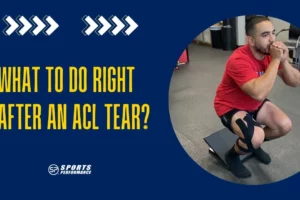If you’re dealing with an injury and considering an MRI, you’re probably asking yourself:
- Do I need it now?
- What will it tell me?
- Will it change my treatment plan?
Before you schedule that scan, let’s break down what an MRI really does, when it’s useful, and why the results might not be as straightforward as you think.
What Is an MRI and What Does It Show?
An MRI (Magnetic Resonance Imaging) is a high-tech scan that provides a detailed view inside your body, beyond what an X-ray can show. It helps identify:
- Fractures
- Tears in muscles, ligaments, or tendons
- Swelling and inflammation
Many people assume an MRI is necessary when they experience ongoing pain, but getting one often depends on insurance approval. Typically, the process looks like this:
- You visit your primary care doctor.
- They may order an X-ray first.
- If the X-ray doesn’t reveal a fracture, they might refer you to physical therapy.
- If physical therapy doesn’t help, only then do they consider an MRI.
Of course, you can skip these steps and pay for an MRI out of pocket—but should you?
The Real Question: Will an MRI Change Your Treatment Plan?
People seek MRIs to confirm the severity of their injury. The scan can help determine if surgery is necessary. However, this often leads to two scenarios:
- Best case: The MRI shows no serious damage, but you’re still in pain—so now what?
- Worst case: The scan reveals a significant injury that might require surgery.
But before you rush to get an MRI, ask yourself:
- Will knowing the results change my course of care?
- If I’m already committed to conservative treatment (like physical therapy), do I need confirmation of an issue I’m managing anyway?
Most people find that an MRI doesn’t change their treatment approach.
Degeneration Is Normal—Even If You Have No Symptoms
One of the biggest surprises with MRI results is degeneration findings. Many people panic when they see words like “disc herniation,” “rotator cuff tear,” or “cartilage thinning” on their report. But here’s the truth:
- These changes are common, even in young, healthy people with no pain.
- Research has shown that individuals in their 20s and 30s often have herniated discs or joint wear-and-tear—even though they feel perfectly fine.
- On the flip side, some people in their 50s or 60s have MRI findings that look “bad” but experience zero symptoms.
This means that not all MRI findings correlate with pain or dysfunction. Just because something appears on the scan doesn’t mean it’s the cause of your discomfort.
Should You Get an MRI?
Before scheduling an MRI, consider these key points:
- If you’re not planning to get surgery, an MRI likely won’t change your treatment.
- If you’re already improving with physical therapy, an MRI may not be necessary.
- If you simply want peace of mind, an MRI can provide reassurance—but remember that incidental findings may not be relevant.
Instead of relying solely on MRI results, the best approach is to assess your symptoms, function, and progress with a healthcare professional.
When an MRI Might Be Necessary
There are situations where an MRI is beneficial, such as:
- Significant instability in a joint
- Severe weakness or numbness that isn’t improving
- Symptoms that worsen despite conservative care
- A history of trauma, where structural damage is suspected
In these cases, an MRI can help guide next steps, whether it’s continued rehab or surgical intervention.
Final Thoughts: MRI vs. Your Recovery Plan
MRIs are valuable diagnostic tools, but they shouldn’t dictate your entire treatment approach. If you’re currently in physical therapy and seeing progress, an MRI result won’t necessarily change your path.
Instead of letting MRI findings cause unnecessary fear, focus on your symptoms and function—not just what the scan shows.
As always, we hope this helps! For any questions and all suggestions, please email us at TeamSP@SportsPerformancePT.com
If you want to know more information about how we can help, get started with a FREE discovery phone call.
Click the following link -> DISCOVERY PHONE CALL.
If you’re interested in doing Physical Therapy at Sports Performance -> CLICK HERE TO LEARN MORE & INQUIRE
If you would like to see more from us at Sports Performance… Watch our Podcast episode 141 about How to Improve your Long Term Health and Wellness -> CLICK HERE
– Dr. Chris

STAY CONNECTED
Instagram: CLICK HERE
Facebook: CLICK HERE
YouTube: CLICK HERE
Podcast: CLICK HERE
TUNE IN TO OUR PODCAST













